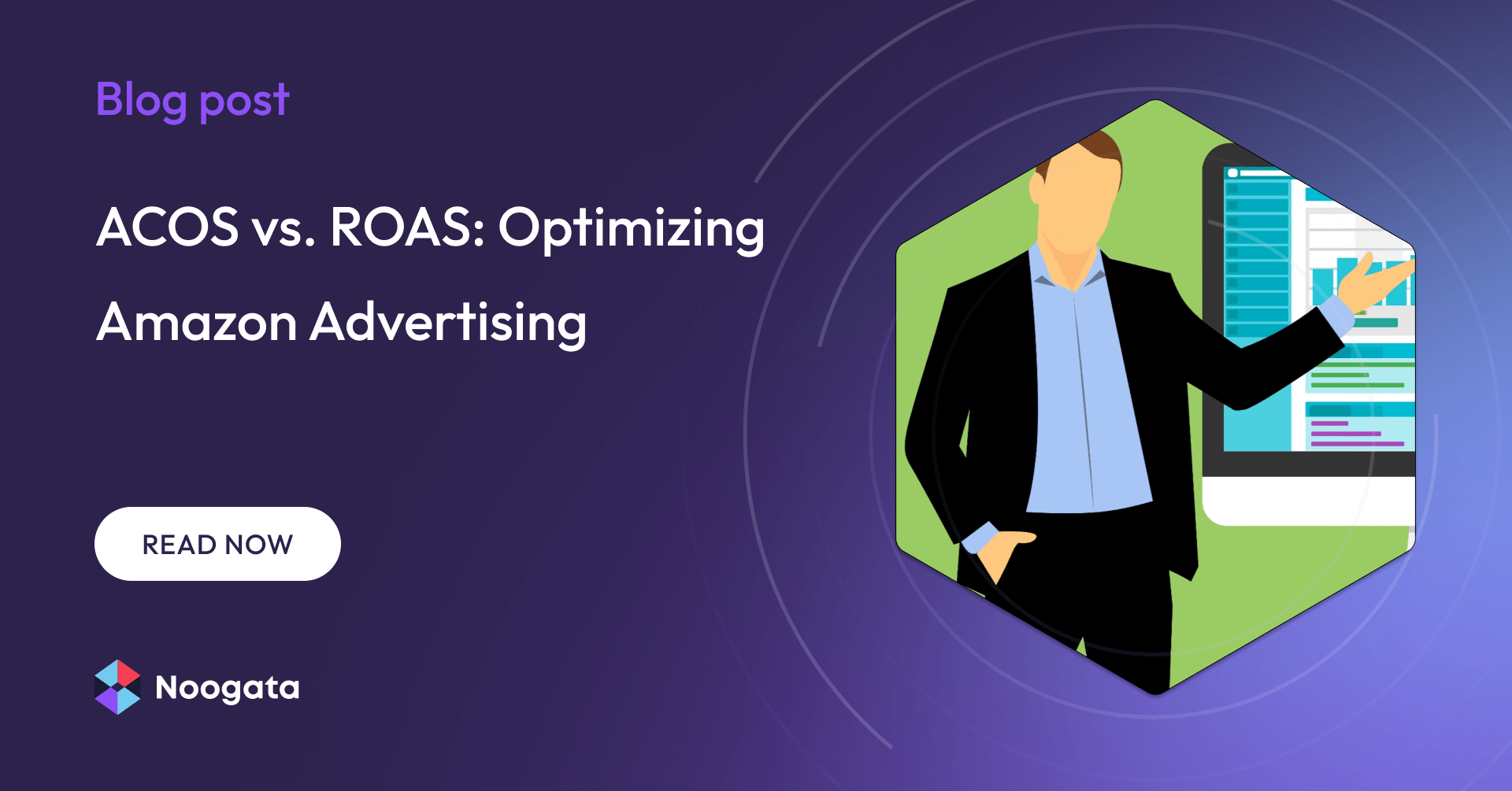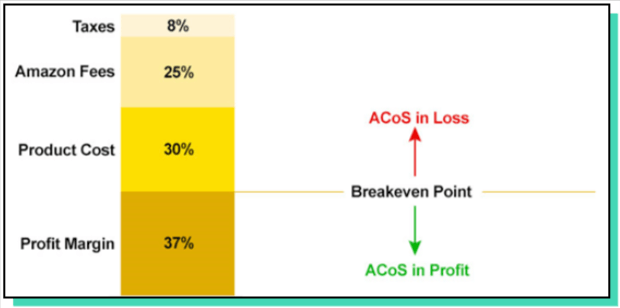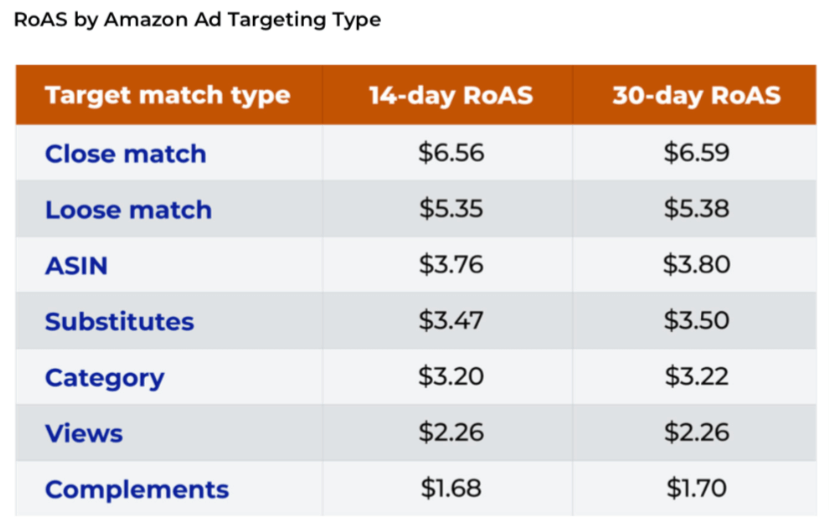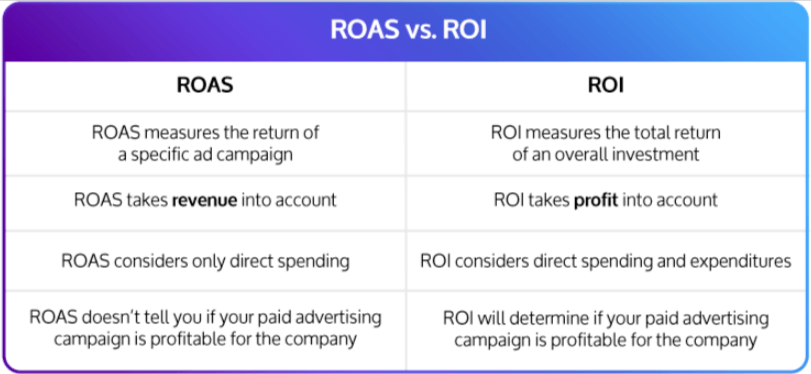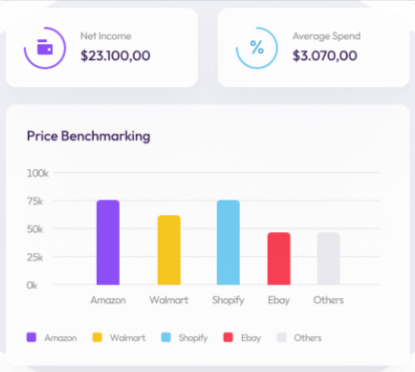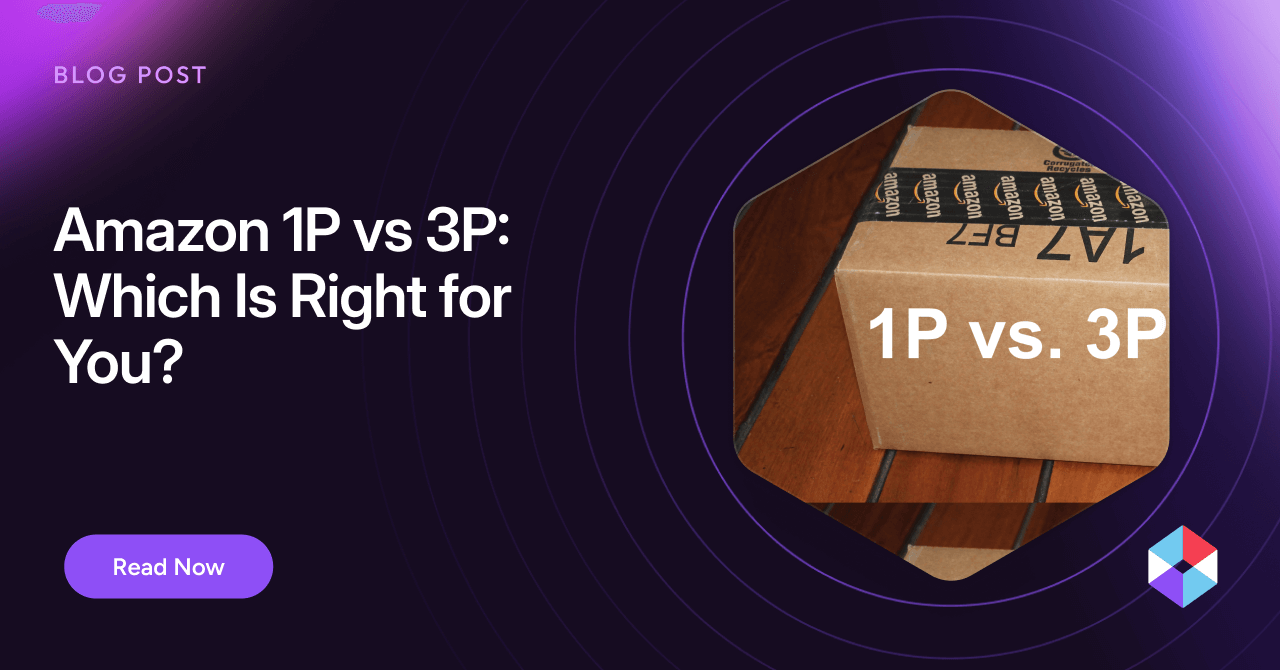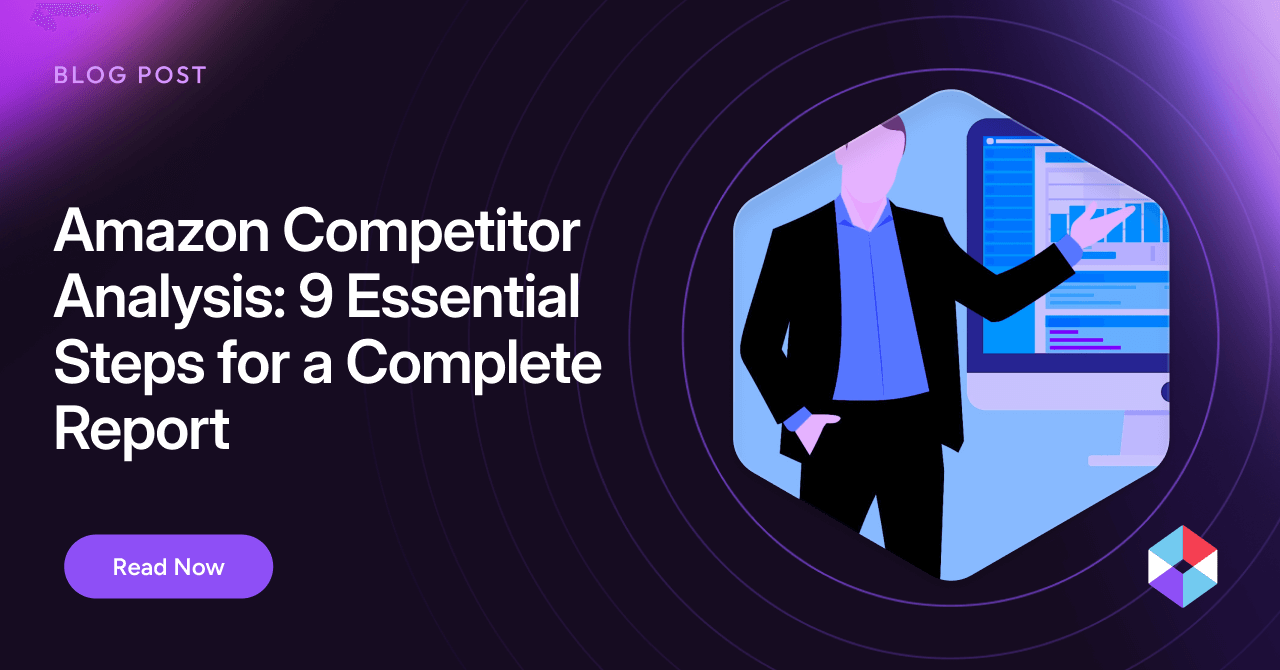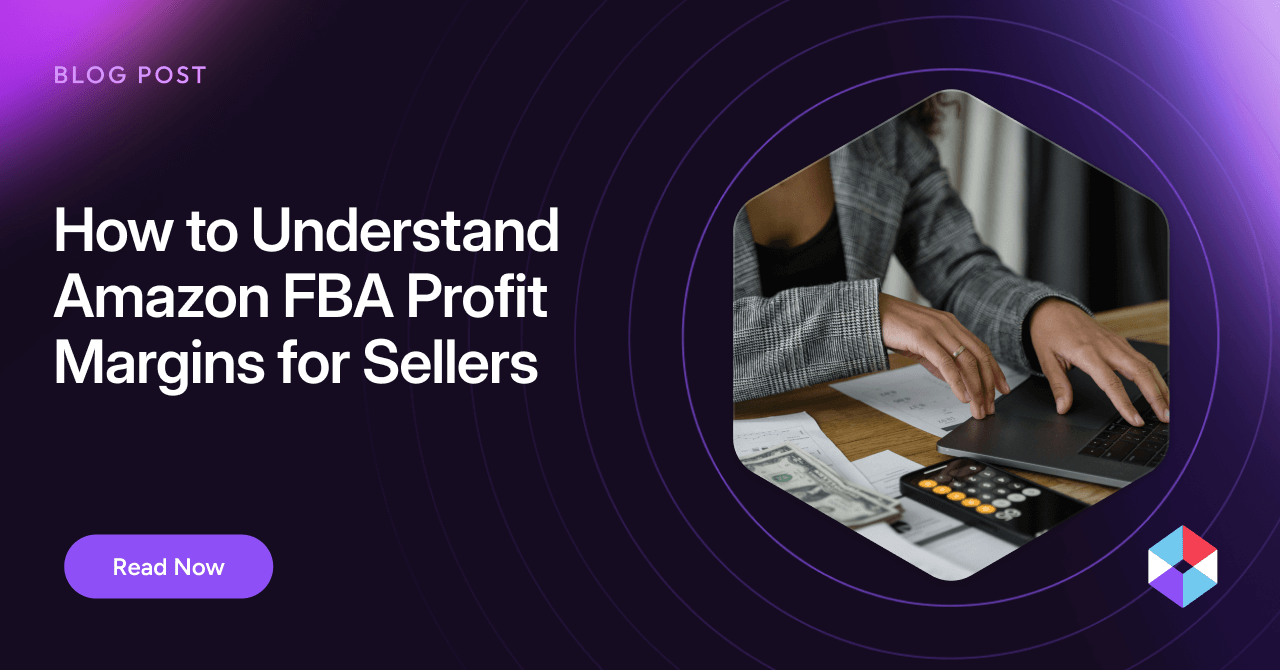Becoming an Amazon Seller is easy. Standing out among the competition in the endless scroll of the world’s largest online marketplace is another matter entirely. No matter how great your products are, succeeding as an Amazon merchant means using all available resources, including Amazon’s increasingly popular pay-per-click advertising platform.
One out of every four retailers in the U.S. spends $80,000 or more per month on Amazon Ads, mainly the “sponsored product” listings that appear in search results. Launching an Amazon PPC campaign will get buyers’ attention, but that doesn’t automatically translate to higher profits. To win with Amazon Ads, you need to understand the key metrics that tell you how effective they are.
The key performance indicators most commonly used to evaluate Amazon advertising campaigns are ACOS (Advertising Cost Of Sale) and ROAS (Return On Ad Spend). We’ll break down exactly what these KPIs are measuring, how they differ, and what they can tell you about optimizing your Amazon PPC campaigns for increased sales and higher revenue.
What is ACOS, and why is it important?
Advertising Cost of Sale, or ACOS, tells you how much you spend on advertising to make one dollar in sales. In other words, it’s the percentage of each sales dollar that went toward advertising.
Historically speaking, ACOS is the metric that Amazon has always included in the reports they provide to sellers. It can be calculated by following a simple formula:
ACOS = Ad Spending / Attributed Revenue
For example, let’s say you spent $1,800 on Amazon Ads and made $6,000 in sales attributable to that campaign. 1,800 divided by 6,000 is 0.3, or 30%. According to recent data, this figure would be a little less than the median ACOS for Amazon Sellers, which is nearly 36%.
You can compare ACOS to your profit margin to see whether or not you’re meeting your break-even point, the threshold between a successful campaign and one that costs more money than you’re making back.
3 Ways to Optimize Amazon Advertising for ACOS
There are situations where it may be acceptable to run a high ACOS for some time, such as a new product launch, but for the most part, your goal should be to keep your ACOS as low as possible. Here are three ways to optimize your ad campaigns for ACOS:
- Beat your competition on price – Well-placed ads get attention, but buyers always look for a great deal. If you’re not offering a bargain, they’ll keep scrolling.
- Choose your keywords strategically – Target keywords associated with buyers in the latter stages of their journey who are closer to making a final purchasing decision.
- Focus on highly rated products – Amazon will give more views and better PPC to products they think are more likely to sell, such as products with many positive customer reviews.
What is ROAS, and why is it important?
ROAS, or Return on Ad Spend, tells you how much sales revenue you bring in for every dollar you spend on advertising. It illustrates exactly what you’re getting for your advertising dollar.
ROAS is a widely-used metric in digital advertising spaces, and Amazon has recently begun providing it in their seller reports alongside ACOS. This makes it easier to compare the efficacy of Amazon Ads against campaigns on competing platforms like Facebook or Google.
Here’s the formula for ROAS:
ROAS = Attributed Revenue / Ad Spending
Using the example we provided earlier for ACOS to calculate ROAS, we would take 6,000 and divide it by 1,800, giving us 3.33. So, for every $1 we spend on advertising, we make $3.33 in sales revenue.
Marketers like ROAS as a comparative metric. The standard for a “good” ROAS will vary a lot between industries and platforms, but putting your Amazon Ads ROAS side-by-side with Google Ads ROAS will tell you at a glance which platform delivers a better value.
3 Ways to Optimize Amazon Advertising for ROAS
When it comes to increasing your ROAS, you have two options: sell more products, or lower your advertising costs. Here are some proven tips:
- Improve the quality of your content – High-quality images, relevant product descriptions, and engaging ad formats will increase your conversion rates.
- Don’t overbid on popular keywords – If you and your competitors are all going after the same keywords, it creates a bidding war and drives up your PPC. Market research can help you find underutilized but effective keywords to target.
- Use Exact Match Bidding – There are several ways to target search terms on Amazon. You may be able to reach more eyeballs by bidding on searches broadly related to your keywords, but you can get better rates by focusing on specific words and phrases only.
ROAS vs. ROI
ROI (Return on Investment) is a widely-used metric for all kinds of business expenditures, and it has some obvious similarities to ROAS. However, there are a few key differences that make ROAS the better metric for evaluating the performance of ad campaigns.
ROI deals with the big picture. It looks at profit, not revenue, and includes all the expenses involved in a particular investment. ROAS deals with revenue and only factors in your direct spending on a specific ad campaign.
ROAS can tell you exactly how much revenue an ad campaign generates, but ROI tells you whether or not you’re actually making a profit from it. A product can have a strong ROAS for its ad campaign but still yield an overall negative ROI.
ACOS vs. ROAS: The Final Showdown
So, what’s the main difference between ACOS and ROAS? As you may have noticed, these two metrics have a direct relationship—one is just the inverse of the other. They’re both telling you the same story but from different perspectives. ACOS gives you the revenue generated by your ad campaign as a percentage, while ROAS expresses it as a dollar amount.
The choice to use ACOS or ROAS depends on the situation. It can be helpful to use ACOS if you’re doing a cost-based campaign analysis. ROAS makes the campaign’s value easier to grasp and can be more beneficial for comparative analysis. As long as you can track your spending on an ad campaign and attribute sales accurately, you can easily calculate both KPIs and use either one as needed.
Best of Both Worlds: Noogata’s Ad Booster
Having access to competitive intelligence tools that provide critical insights plays a significant role in optimizing Amazon Ad campaigns across all key metrics. Noogata’s Ad Booster can help you outflank your competition by identifying the keywords that drive the most traffic and showing you which products you should advertise.
With Noogata’s Ad Booster, you can find the keywords and product searches with the highest performance potential, eliminate the low-value keywords that negatively affect your results, gain insight into your competitors’ strategies, and optimize your Amazon Ads bids to improve both ACOS and ROAS. This tool leverages both historical and live, real-time advertising data to put you in the strongest possible position on Amazon’s digital shelf.
Optimize Your Campaigns with Intelligence and Insight
To optimize an ad campaign on Amazon, you need to be able to measure and evaluate its performance. ACOS and ROAS give you two valuable perspectives that draw from the same source data to provide an objective picture of what your ad buys are delivering for you.
Once you’ve got solid metrics to keep you informed, you need insights and solutions to help you take effective action based on that information. In addition to the Ad Booster designed to optimize your Amazon campaigns, Noogata offers tools for monitoring your competitors, tracking your exposure, improving your product pages, spotting new consumer trends, and leveraging AI to grow your revenue.
If you’re ready to uncover the insights that will put you ahead of the pack, book a free demo to try out Noogata’s solutions for Amazon Sellers.
